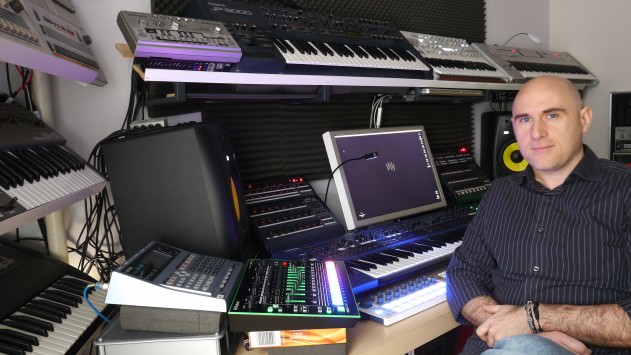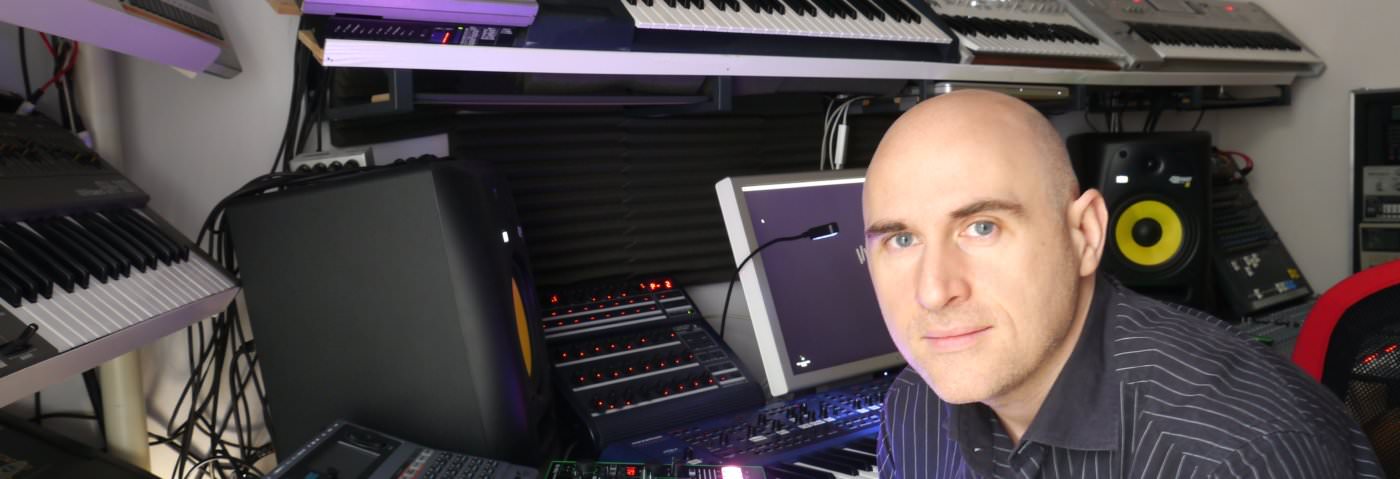Having produced dance music since the late 80s, Vince Watson has witnessed the evolution of studio gear first hand. We spoke to him about his unique perspective on the development of tech and found out whether he envies producers starting their careers today.

Things were better in the good old days, right? We’ve all heard the tales of young musicians in the late 80s being inspired by the radical new sounds of house and techno, vintage analogue synths selling for pennies and primitive studio setups inspiring countless classic tracks.
Some of those stories might well be rooted in truth, but the apocryphal tales often overlook the fact that things weren’t all so good in that romanticised golden age. Yes, you could probably find yourself a cheap TB-303, but the young producer in the late 80s and early 90s couldn’t count on all the things that today’s producers take for granted, from soft synths to affordable recording options.
Vince Watson’s music-making career has run in parallel with the history of house and techno, from the late 80s onwards. We called him at home in Amsterdam to discuss how his studio setup has reflected trends over the years, from bargain vintage synths to workstations, tentative steps into the world of computers and finally embracing the possibilities of software.
Attack: I thought it would be interesting to talk about the evolution of your studio setup and the way it’s influenced how you make music over the years. One thing that struck me when we did the studio feature with you was that you’ve got little pockets of gear, starting from stuff you bought a long time ago and leading all the way up to the present day. What was your introduction to electronic instruments?
Vince Watson: I was always a keen listener of electronic music from quite a young age, and I was always curious as to what the hell the machines were. I’d read in magazines like Music Technology about all these crazy machines but I never knew where you could buy them because I was so young at the time. I was like 12 or 13 years old.
My gran bought me an SH-101 – we paid £50 for it in a second-hand shop.
What kind of era are we talking here?
We’re talking like ’85 to ’88, something like that, so it was really early. Things were picking up with MIDI and all this kind of stuff but I didn’t have a clue what was going on. Then I was in Glasgow one day with my gran and we just happened to pass by a music shop. I couldn’t believe what I could see in the window. My gran and my parents knew that I was really into music and they wanted me to take the next step, because I’d had organs and stuff like that, but they knew that I wanted to do something a bit more serious. So she actually bought me an SH-101 – we paid £50 for it in a second-hand shop.
To be honest, I still didn’t really know what it was. I knew it was a Roland synth and I’d seen Roland synths in the music magazines, so I thought it must be one of those crazy things that make these crazy noises, but it wasn’t actually until after I’d bought it that I realised just how good a machine it was and what it did. Even after buying it, it took me like six months to figure out how to actually use it. I was still really young so I didn’t understand any of the buttons on it – didn’t know what square waves were, anything like that, you know?
Right.
So because my mum had seen how into it I was, not long after that she took me into Sound Control, which was the local music store in Glasgow. They had a second-hand department downstairs at the time and there was a 303 in there. We paid £75 for it, so for £125 I had a 101 and a 303 – those were my first two machines.
I used to put batteries in the 101, plug in my Walkman headphones and sit on the bus on the way to college listening to it.
It’s not a bad little setup to get started with. Is that the same 101 and 303 you’ve still got now?
Yeah, it is. Unfortunately the 303’s not in great health and I’m struggling to find someone here in Amsterdam that can do a good job, so I’m going to have to send that away somewhere. The 101’s just in need of a service. I used to put batteries in the 101, plug in my Walkman headphones and sit on the bus on the way to college listening to it.
What was your musical inspiration? This is probably before house and techno, so what were you listening to at that point?
Jean-Michel Jarre. That was the main catalyst for getting into the synth stuff. My mum had the Oxygène album lying around in the car and it always fascinated me, what the hell was making the noises. The fact that he made his own synths and did all these live shows, for me that was the ultimate, so I kind of followed that story and tried to buy some machines that he might have used. Musically I didn’t go the same way as him but I was definitely inspired by what he was doing with synths and that’s basically what it came from. It wasn’t until later that I got more into the techno and house side of things, from ’88, ’89 onwards. I was still only 14, 15 years old but that’s when I started getting into Detroit stuff.
So your history of making music really fits neatly alongside the development of house and techno, which I think is quite interesting. If you’re a young kid today jumping into music production you’ve got a lot of this stuff figured out for you already – there are software options, hardware’s much more affordable – but when you started out that wasn’t the case and there wasn’t much information about how to produce music or how to use the equipment.
I didn’t know how to plug the 101 and the 303 together until I got a little mixing desk and some speakers. My mind was just totally blown then.
That’s right. The music magazines at the time did a decent job of trying to inform you of what people were using to make the music, but unless you actually had the equipment in front of you – which at the time was really expensive for a lot of the equipment people were using – it was really difficult to get a foothold.
How did you teach yourself to use this stuff? Was it just experimentation?
Totally. In between the organs and the 101 I’d had some little Casio sampler things that were basically toys, but I was already sampling my own voice and trying to make melodies up, so when I got the 101 it was an instinctive thing to do, trying to create those melodies on the synthesiser, but I didn’t have any speakers or anything – I just did it all with headphones. I didn’t even know how to plug the 101 and the 303 together for ages – it wasn’t until I got a little mixing desk and some speakers that I was able to play the two at the same time. My mind was just totally blown then.

04.42 PM
Nice read, top bloke.
06.52 PM
Great read and I also like that this is a studio tour with a ton of info on gear and the artist. Thanks.
10.51 PM
Super interesting.
03.05 AM
sounds like a great guys down to earth and a ton of knowledge
05.41 PM
Yes, synths were more affordable, but you needed to spend a lot for a 24 channel mixer, EQs and compressors etc.
Samplers were expensive as well.
A few hundred bucks for good cables, or noisy recordings. Speaking of recording: You needed a DAT or analog reel to reel or were limited the dirty sound of compact cassette. You wouldn’t have an overwhelming choice of affordable studio speakers…
10,000 bucks got you a small studio. But this was very limited compared to todays DAWs. Yet of course, compared to another 10, 20 years earlier, 10,000 was much more attainable. The Kraftwerk guys probably had to get their hands on much more money than just 10 grand to record.
04.06 PM
One of the best.